
Annual Forbs Around Las Vegas, Vegetation Around Las Vegas
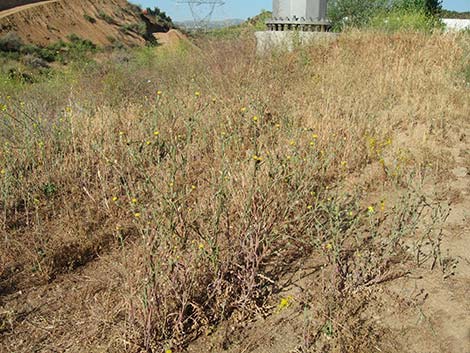 Hillside with star-thistle (nasty to walk through) |
General: Malta Star-thistle (Centaurea melitensis) is an annual forb with many basal leaves and flowering stalks that emerge from the leaf mass and branch into many stalks that grow to shin or knee high. The flower buds are well armored with nasty spines. The flowers are yellow and emerge from the top of the flower bud. Malta and Yellow Star-thistles both have yellow flowers, but Malta Star-thistle has short spines (less than 2/5 inch) with a tiny pair of lateral spines that fork off some of the larger spines. Malta Star-thistle is a nasty, invasive noxious weed. Around Las Vegas, this species is uncommon -- let's all work to make sure it stays that way. Look for this species around Moapa and upstream from Arrow Canyon. Keep an eye out for this species. Land managers are actively working to eradicate Star-thistles, so hopefully you won't see it anywhere. Maltha Star-thistles is on the Lake Mead NRA "Top 10 Invasive Species" list. This is a noxious weed. If hikers and other visitors to the native habitats around Las Vegas see this species, please report the observation to the Nevada Department of Agriculture using their online forms. If you have this species on your private property, please consider eradicating it. |
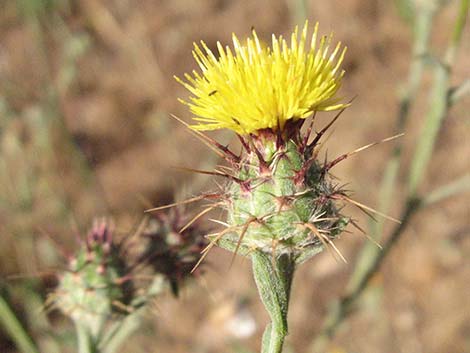 |
Family: Sunflower (Asteraceae). Other Names: Malta Starthistle, Maltese star-thistle, tocalote. Plant Form: Basal leaves with upright flower stalk. Nasty spines. Height: To about 2 feet. Stems: A single stalk forks to produce several flowering stalks. Leaves: Gray-hairy. Lower leaves lobed; upper leaves linear, reduced, clasp (fused to) the stem. Flowers: Blooms spring through fall. Flowers grow at the top of the flower stalks; petals many, yellow. |
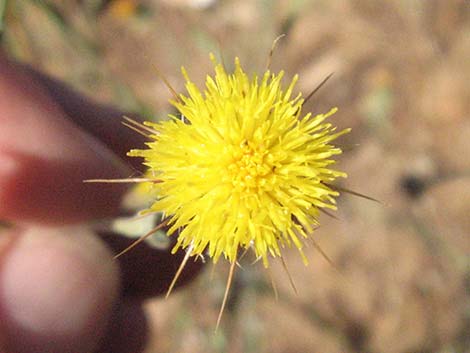 |
Seeds: Tiny, many per plant. Habitat: Disturbed sites such as roadsides, pastures, grasslands, rangeland, open woodlands, fields, pastures, and cultivated fields. Elevation: To about 7,000 feet; usually lower elevations. Distribution: Established widely throughout the U.S. and southern Canada. Native to Europe. Management: Small infestations may be hand pulled over several years. Regular cultivation for several years is effective. Mowing and early season grazing change the plant to a prostrate form that may produce more flowers, so neither are recommended. Several insects may attack the seedhead, but their effectiveness is limited. Herbicides are available. Comments: For additional information on this species and other invasive weeds in Nevada, see the excellent booklet Invasive Weed Identification for Nevada, University of Nevada Cooperative Extension Publication SP-03-09. |
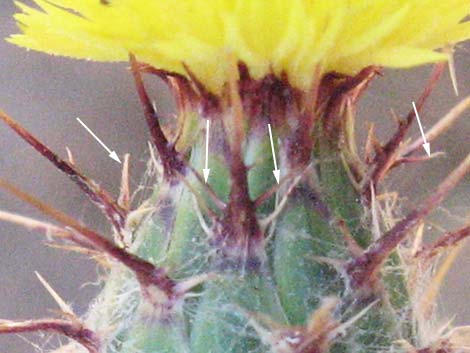 |
Note the small spines (arrows) on the sides of the large spines. These spines tell you this is Malta Star-thistle rather than Yellow Star-thistle. |
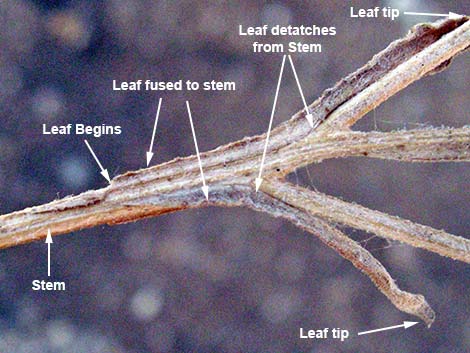 |
Dried stem and leaves. Note that the base of the leaf up to about the middle is fused to the stem. Arrows point out leaflet parts (top of photo), but the other leaf (bottom of photo) shows the same features. |
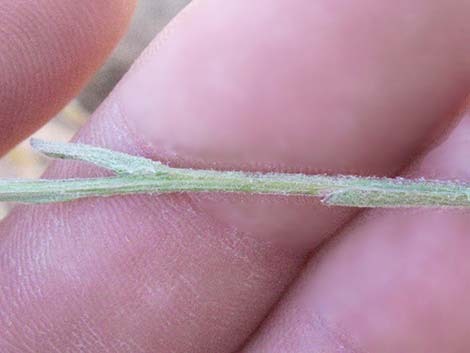 Stem |
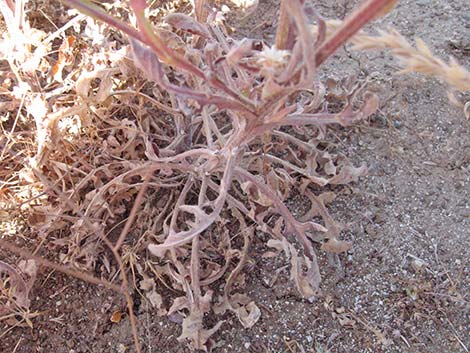 Dried leaves at the base of the plant |
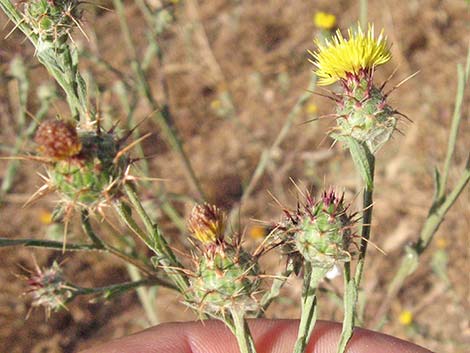 |
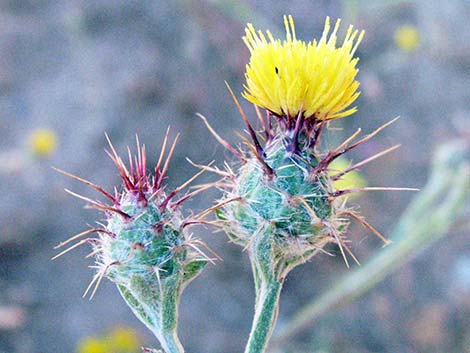 |
Note: All distances, elevations, and other facts are approximate. Names generally follow the USDA database.
![]() ; Last updated 211222
; Last updated 211222
| All Annual Forbs | Plant Species Index | Glossary | Copyright, Conditions, Disclaimer | Home |